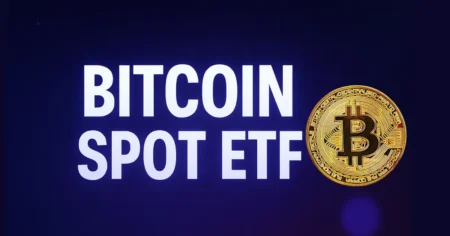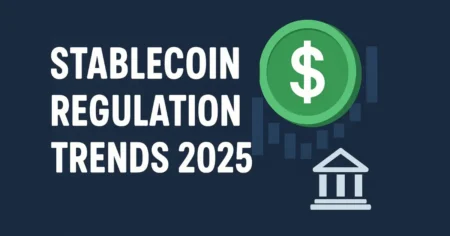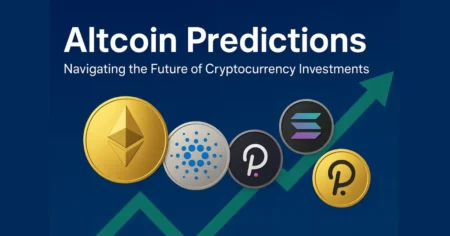Future of blockchain in finance
Introduction
In recent years, blockchain technology has emerged as one of the most talked-about innovations in the world of finance. Originally known as the backbone of cryptocurrencies like Bitcoin, blockchain has evolved far beyond digital currencies. Its ability to offer transparency, security, and decentralized control makes it a powerful tool for transforming financial systems. From improving transaction efficiency to reshaping how we store and transfer value, blockchain is already disrupting traditional finance—and its full potential is only beginning to unfold. In this blog, we’ll explore how blockchain is currently being used in finance, the benefits it offers, the challenges it faces, and what the future might look like as this revolutionary technology continues to grow.
Current Role of Blockchain in Finance
Blockchain technology is already playing a significant role in reshaping the financial industry. What began as a support system for cryptocurrencies has evolved into a broader financial tool that’s being used by banks, fintech companies, and even governments.
One of the most visible uses of blockchain in finance today is payments and money transfers. Traditional cross-border payments are often slow and expensive, involving multiple intermediaries. Blockchain enables faster and cheaper transactions by allowing direct peer-to-peer transfers without relying on third-party processors. Platforms like Ripple and Stellar are already being used by financial institutions to streamline international remittances.
Another area where blockchain is making a difference is settlement and clearing of trades. In traditional systems, the process of finalizing a trade between buyers and sellers can take days. With blockchain, this process becomes nearly instant, reducing the need for intermediaries and lowering settlement risks. Major banks and stock exchanges are piloting blockchain-based systems to speed up trade settlements and improve transparency.
Additionally, blockchain is enhancing security and reducing fraud. Because each transaction is recorded on a decentralized, tamper-proof ledger, it’s extremely difficult to alter or delete financial records. This creates a more trustworthy and reliable system for financial data management.
Blockchain is also being used to power smart contracts, which are self-executing contracts that automatically fulfill agreed-upon terms. These contracts are particularly useful in areas like insurance, loans, and automated payments, where they reduce paperwork and human error.
In short, blockchain is no longer just a futuristic concept—it’s a practical tool being integrated into the financial systems of today. And as technology and regulations evolve, its presence in finance is expected to expand even further.
Key Benefits of Blockchain for the Financial Sector

Blockchain is not just a new technology—it’s a game-changer for the financial world. Its unique features offer several key benefits that address long-standing challenges in traditional finance. Here are some of the most significant advantages:
Enhanced Security and Fraud Prevention
One of blockchain’s strongest features is its ability to provide a secure environment for financial transactions. Every transaction recorded on a blockchain is encrypted and linked to the previous one, making the system tamper-resistant. This reduces the chances of fraud, identity theft, and unauthorized access—common issues in traditional banking systems.
Faster and More Efficient Transactions
Traditional banking systems often involve multiple intermediaries and layers of verification, causing delays—especially in international transfers. Blockchain simplifies this by enabling direct, peer-to-peer transactions that can be completed in minutes, even across borders. This not only saves time but also increases overall efficiency in the system.
Cost Reduction
Financial transactions through blockchain eliminate the need for middlemen such as clearing houses and payment processors. As a result, processing fees, administrative costs, and human resource expenses can be significantly reduced, benefiting both institutions and consumers.
Smart Contracts and Automation
Blockchain supports smart contracts—digital agreements that automatically execute when conditions are met. This removes the need for manual oversight, reduces the chance of human error, and speeds up processes such as loan approvals, insurance claims, and trade settlements.
Improved Transparency and Traceability
Because blockchain records are visible to all participants in the network and cannot be altered, it increases transparency. Financial institutions can easily track the history of transactions, which helps in audits, compliance, and trust-building with customers.
Greater Financial Inclusion
Blockchain opens doors for people who are unbanked or underbanked—especially in developing regions. With just a mobile phone and internet access, individuals can use blockchain-based financial services without needing a traditional bank account, bridging the gap to financial access.
In summary, blockchain offers the financial sector a powerful toolkit to improve operations, reduce risks, and expand services. As these benefits become more widely recognized, adoption is expected to grow rapidly in the years ahead.
Challenges and Limitations
While blockchain offers many promising benefits to the financial sector, it also comes with a set of challenges and limitations that cannot be ignored. For this technology to reach its full potential in finance, these issues must be addressed.
Regulatory Uncertainty
One of the biggest obstacles to blockchain adoption is the lack of clear and consistent regulation. Different countries have different approaches—some are embracing blockchain, while others remain cautious or even hostile. This regulatory uncertainty makes it difficult for financial institutions to fully commit to blockchain-based solutions without risking non-compliance or legal complications.
Scalability Issues
Public blockchains, like Bitcoin and Ethereum, often face scalability challenges. As the number of users and transactions increases, networks can become slow and expensive. High gas fees and long confirmation times can limit the practicality of using blockchain for high-volume financial operations. Until scalability improves, widespread adoption may remain limited.
Energy Consumption
Some blockchain systems, particularly those using Proof of Work (PoW) mechanisms, require significant amounts of energy to operate. This has raised environmental concerns and led to criticism from governments and sustainability advocates. Although newer models like Proof of Stake (PoS) are more energy-efficient, not all blockchain platforms have transitioned to these alternatives yet.
Lack of Awareness and Understanding
Many people—including decision-makers in finance—still do not fully understand how blockchain works. This knowledge gap leads to hesitation, resistance, or poor implementation. Without proper education and training, organizations may struggle to adopt the technology effectively or may misuse it.
Integration with Existing Systems
Traditional financial institutions operate on legacy infrastructure that wasn’t built to support blockchain. Integrating blockchain solutions with these older systems can be costly, time-consuming, and technically complex. This creates a barrier for institutions that want to innovate but are tied to outdated technology.
Data Privacy Concerns
While blockchain is transparent by design, this openness may conflict with privacy regulations, especially in sectors like finance where sensitive personal and financial data is involved. Finding the right balance between transparency and privacy is a complex challenge.
Despite these limitations, many experts believe that continued research, regulation, and innovation will eventually overcome these hurdles. But for now, they remain important factors to consider as blockchain continues to evolve in the financial sector.
Future Trends to Watch
As blockchain technology continues to mature, its influence on the financial industry is expected to grow even more profound. Several key trends are emerging that show where blockchain in finance is headed. These trends point to a future where blockchain becomes an essential part of how money moves, value is stored, and trust is built.
Central Bank Digital Currencies (CBDCs)
Many central banks around the world are exploring or piloting their own digital currencies, built on blockchain or similar distributed ledger technologies. CBDCs could offer a secure, government-backed alternative to cash, while also improving the efficiency of the monetary system. Countries like China and Sweden are already far along in their development, and more nations are expected to follow.
Tokenization of Assets
Tokenization refers to the process of converting real-world assets—such as real estate, stocks, or commodities—into digital tokens on a blockchain. This makes it easier to trade, divide, and transfer ownership of assets. Tokenization can unlock liquidity in markets that have traditionally been slow or illiquid, while also opening up investment opportunities to a wider audience.
Rise of Decentralized Finance (DeFi)
DeFi is a rapidly growing segment of blockchain finance that offers financial services without relying on traditional banks or intermediaries. Built on blockchain networks like Ethereum, DeFi platforms allow users to lend, borrow, trade, and earn interest—all through smart contracts. As these platforms become more secure and user-friendly, they could offer a real alternative to conventional banking services.
Cross-Border Payments and Remittances
Blockchain is well-suited to streamline international payments, which are often slow and expensive. By removing intermediaries and using digital currencies or stablecoins, blockchain can make cross-border transfers nearly instant and significantly cheaper. This is especially useful for remittances, where people send money to family members in other countries.
Blockchain-Based Identity and KYC Systems
Financial institutions spend huge amounts of time and money verifying customer identities through Know Your Customer (KYC) processes. Blockchain-based identity systems can give individuals control over their own verified digital identities, simplifying compliance while enhancing security. This could reduce onboarding times and fraud, while also improving user experience.
Institutional Adoption and Hybrid Models
More banks and financial institutions are not only experimenting with blockchain but also actively investing in it. In the future, we are likely to see hybrid models where traditional finance integrates blockchain for specific use cases like settlements, identity management, or lending. This trend will blur the line between conventional and decentralized systems.
These trends show that blockchain in finance is not a passing phase—it’s a structural shift. As the technology advances and adoption grows, blockchain is expected to become a core component of the global financial ecosystem.
How Traditional Institutions Are Responding

While blockchain began as a disruptive force outside the mainstream financial system, traditional institutions are no longer watching from the sidelines. Banks, investment firms, and even central banks are now actively exploring and adopting blockchain technology in various ways. Their response marks a shift from skepticism to strategic involvement.
Investing in Blockchain Research and Development
Many major financial institutions have established dedicated teams to explore blockchain applications. Companies like JPMorgan, Goldman Sachs, and HSBC have been investing in blockchain R&D to test its potential in areas like payment processing, settlements, and asset management. This growing interest highlights a serious shift toward long-term integration.
Launching Pilot Projects and Internal Blockchains
Several banks have moved beyond experimentation and into real-world trials. For example, JPMorgan developed its own blockchain platform, Onyx, and introduced a digital coin (JPM Coin) for internal cross-border payments. Others are testing blockchain-based trade finance platforms to improve the speed and transparency of global commerce.
Forming Industry Consortia
To reduce development costs and promote interoperability, many institutions are collaborating through blockchain consortia. Groups like R3 and the Hyperledger Project bring together banks, tech firms, and regulators to jointly develop standards and solutions that can be used across the financial industry.
Embracing Digital Currencies and Custody Services
As interest in digital assets grows, traditional institutions are adapting by offering custody services for cryptocurrencies, launching trading platforms, or partnering with crypto companies. For example, BNY Mellon and Fidelity have started providing crypto asset custody, signaling increased acceptance of digital finance.
Regulatory Engagement and Policy Development
Established institutions are also working closely with regulators to shape the future of blockchain in finance. By participating in policy discussions, these players are helping develop frameworks that balance innovation with risk management, especially in areas like anti-money laundering (AML) and Know Your Customer (KYC).
Moving Toward Hybrid Finance Models
Instead of replacing traditional systems entirely, many institutions are combining blockchain with existing infrastructure. This hybrid approach allows them to improve efficiency and security while maintaining compliance and client trust. It also helps reduce disruption during the transition to more digital, decentralized models.
In summary, traditional financial institutions are not being left behind—they are actively reshaping themselves to stay relevant in a blockchain-driven world. Their involvement is helping to bring structure, stability, and legitimacy to blockchain adoption across the financial sector.
What Needs to Happen for Mainstream Adoption
Although blockchain has made significant progress in the financial sector, it has not yet reached full mainstream adoption. For blockchain to become a foundational part of global finance, several key developments need to take place across technology, regulation, and public understanding.
Regulatory Clarity and Global Standards
One of the biggest barriers to widespread adoption is the lack of clear, consistent regulations. Financial institutions need a well-defined legal framework to operate confidently with blockchain. Governments and regulatory bodies must work together to create policies that support innovation while protecting consumers and preventing misuse. Global coordination will also be essential to ensure cross-border compatibility and compliance.
Scalable and Energy-Efficient Infrastructure
To support large-scale financial operations, blockchain networks must be able to handle thousands of transactions per second without compromising speed or cost. This requires advancements in scalability solutions, such as Layer 2 technologies and more efficient consensus mechanisms like Proof of Stake (PoS). Reducing energy consumption is also critical, especially for institutions under pressure to meet sustainability goals.
Interoperability Between Systems
Different blockchains currently operate as separate ecosystems, which limits their usefulness in a global financial network. For blockchain to be fully effective, systems must be able to communicate with one another. Interoperability will enable seamless transfers of assets and data across platforms, enhancing the overall value and functionality of blockchain in finance.
Enhanced Security and Privacy Measures
While blockchain is inherently secure, additional layers of privacy and data protection are required—especially in a heavily regulated industry like finance. Solutions like zero-knowledge proofs and permissioned blockchains are being developed to ensure data privacy while maintaining transparency and trust.
Greater Public Awareness and Institutional Confidence
Mainstream adoption also depends on building trust among users and institutions. Many people still associate blockchain solely with cryptocurrencies or view it as too complex to understand. Education, user-friendly applications, and successful use cases will be essential to changing public perception and encouraging adoption at all levels.
Integration with Legacy Systems
Most financial institutions still operate on legacy technology that isn’t easily compatible with blockchain. To transition smoothly, there needs to be a strong focus on developing tools and middleware that can bridge the gap between old systems and new blockchain networks without causing major disruption.
In short, the path to mainstream adoption of blockchain in finance requires more than just technological advancement. It calls for collaboration between innovators, regulators, businesses, and the public. If these challenges are addressed effectively, blockchain has the potential to become a central pillar of the future financial system.
Frequently Asked Questions (FAQs)
Q1. What is blockchain in simple terms?
A: Blockchain is a digital way of storing information so that it’s secure, transparent, and can’t be easily changed. Think of it like a digital ledger that keeps records of transactions and is shared across many computers instead of one central place.
Q2. How is blockchain used in finance today?
A: Blockchain is used in finance for fast money transfers, secure payments, digital contracts (smart contracts), and reducing fraud. Banks and financial companies are testing it for trading, loan processing, and cross-border transactions.
Q3. Is blockchain safe for financial transactions?
A: Yes, blockchain is designed to be secure. Every transaction is encrypted and linked to previous ones, making it very hard to change or hack. However, like any technology, its safety also depends on how it’s used and managed.
Q4. Will blockchain replace banks in the future?
A: Not likely. Instead of replacing banks, blockchain will more likely work with them to make financial services faster, cheaper, and more transparent. Many banks are already exploring how to use blockchain in their systems.
Q5. What are the benefits of blockchain in finance?
A: Some key benefits include:
- Faster transactions
- Lower costs
- Better security
- Fewer middlemen
- More transparency
Easier access for people without bank accounts
Q6. What are the main challenges of using blockchain in finance?
A: The main challenges are:
- Unclear government rules
- Technical limits like slow speed or high energy use
- Lack of awareness and trust
- Difficulty connecting with old banking systems
Q7. What is DeFi, and how is it related to blockchain?
A: DeFi stands for Decentralized Finance. It’s a way of offering financial services like lending, borrowing, or trading without traditional banks. DeFi works completely on blockchain and is run by smart contracts instead of people.
Q8. Are governments using blockchain?
A: Yes, many governments are testing or developing their own digital currencies called CBDCs (Central Bank Digital Currencies), which are built on blockchain. These are still in early stages but are growing quickly.
Q9. Can blockchain help people without bank accounts?
A: Yes. Since blockchain doesn’t require a traditional bank account, it can help unbanked populations access financial services through mobile phones and internet connections.
Q10. Is blockchain the future of finance?
A: It’s a big part of the future. While it won’t replace everything overnight, blockchain is already changing how money moves and how financial systems work. As the technology grows, its impact on finance will keep getting stronger.
Conclusion
Blockchain is quickly changing the way the financial world works. It’s making money transfers faster, reducing costs, and adding more security and transparency. While there are still some challenges to solve, many banks and businesses are already using blockchain—and even more are getting ready to adopt it. As technology and rules improve, blockchain is set to play a big role in the future of finance.
Bonus Points: Quick Facts About Blockchain in Finance
- Blockchain isn’t just for crypto: It powers many other financial tools beyond Bitcoin and Ethereum, like digital contracts and secure payment systems.
- Top banks are already using it: Institutions like JPMorgan, Santander, and Citi are investing heavily in blockchain projects.
- It can reduce human error: Smart contracts automate tasks like payments and loan approvals, cutting down on mistakes.
- Great for audits: Every transaction on a blockchain is recorded permanently, making financial audits faster and more accurate.
- Can improve trust: Since data can’t be easily changed, blockchain builds trust between customers and institutions.
- Supports digital identity: Blockchain can help store and verify digital identities securely, which is useful in banking and KYC processes.
- Lower risk of fraud: Its decentralized nature makes it much harder for hackers to tamper with records.
Also read
- What is a Crypto Wallet and How Does It Work? – Coinsify
- 10 Crypto Terms Every Beginner Must Know – Coinsify
- What is Blockchain Technology – Complete Guide – Coinsify
- How to Buy Crypto Safely in 2025 – Complete Guide – Coinsify
- Bitcoin vs Ethereum: Key Differences Explained – Complete Guide
- Ultimate Blockchain Glossary: Learn Blockchain Terms Easily
- How to Buy Bitcoin Safely (Complete Beginner’s Guide)
- Top 10 Crypto Wallets for Beginners (2025 Edition)
- What is Cryptocurrency? A Beginner-Friendly Guide (2025)






